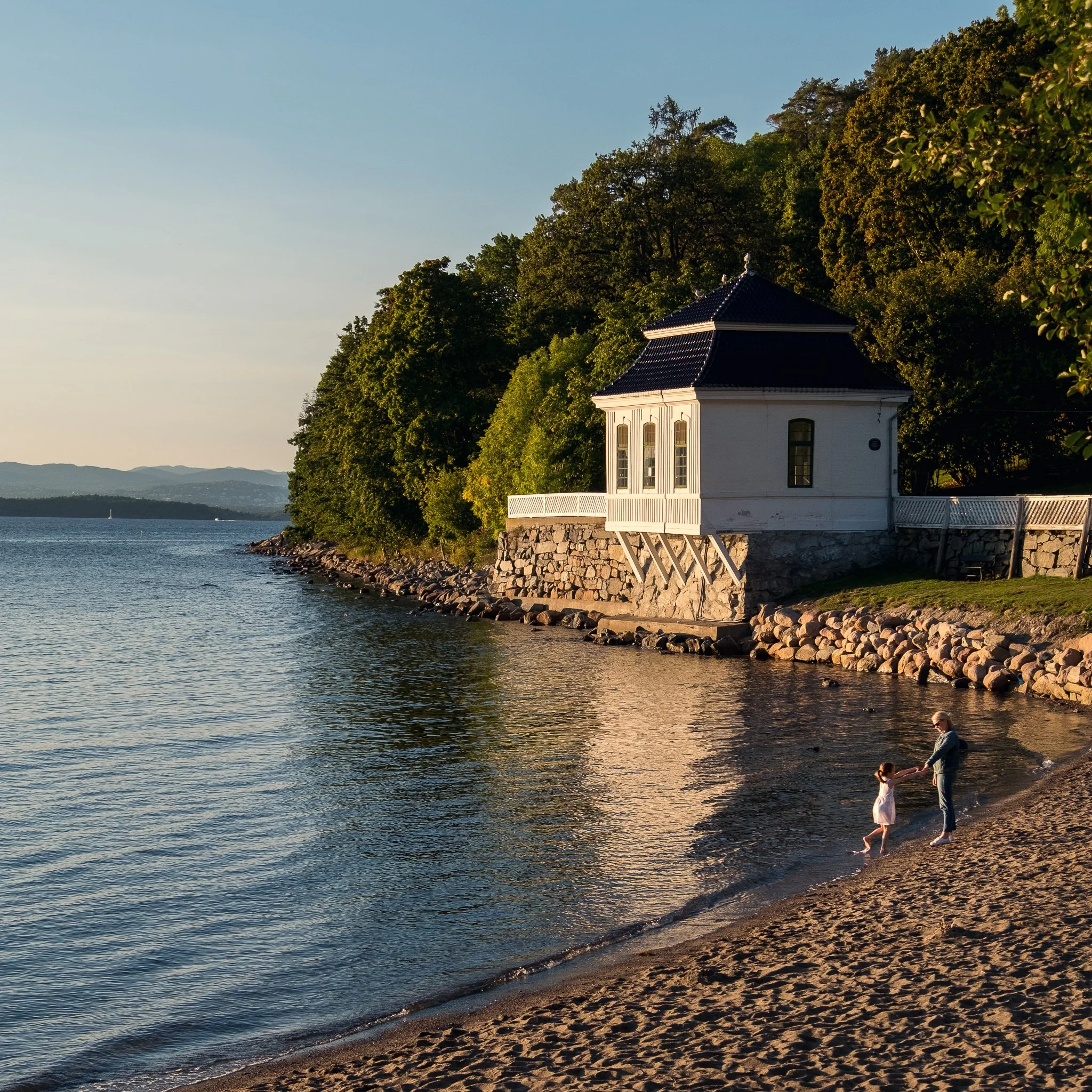SØNDRE NORDSTRAND
Oslo, Norway
A mother and daughter play along the water's edge at Hvervenbukta, a bathing beach south of Ljanskollen, on the east side of the Bunnefjord. Softened light at sundown reflects off the small rococo pavilion and shimmers across the water. The pavilion from the 18th century is preserved from an estate and manor house formerly at the site. The area was bought by the municipality in 1937, and together with Ljanskollen and Fiskevollbukta, form a continuous outdoor and waterfront area with a cafe and many amenities.
Søndre Nordstrand
Søndre Nordstrand district is in the far south of Oslo, bordered by the Bunnefjord area of the Oslo fjord and the Østmarka natural area.
Søndre Nordstrand is the southernmost district in Oslo, situated on the fjord's eastern side and bordered by the fjord's expansive forested areas. Notably, Søndre Nordstrand and the adjacent district, Nordstrand, have the most regulated open space of the districts. Extensive trails for cycling and hiking are lit in the winter for skiing.
Søndre Nordstrand is the largest district in land area and has the lowest housing density, composed primarily of single-family residences. Since the 1980s, the area has been characterized by the emergence of newer suburbs and a substantial population increase. The area is also beholding the largest sites for potential development.
Søndre Nordstrand benefits from Oslo's well-developed public transport network, including the southern terminus of the city's metro line. A commuter rail also connects to Oslo Central Station and beyond, and a robust bus network connects with various points throughout the district and Oslo at large, with newly established direct lines facilitating access to popular recreational areas. For example, a bus line connects from the city centre to Hvervenbukta, one of Oslo's most popular swimming areas on the shores of Bunnefjorden, with a sandy beach, rocky outcroppings and a small café and amenities such as beach-side showers.
Søndre Nordstrand is home to the Klemetsrud plant, Norway's most significant energy recovery plant. With ongoing development, this plant aims to become the world's first waste-to-energy facility boasting full-scale carbon capture and storage capabilities, contributing to Oslo Municipality's ambitious climate and environmental goals.















